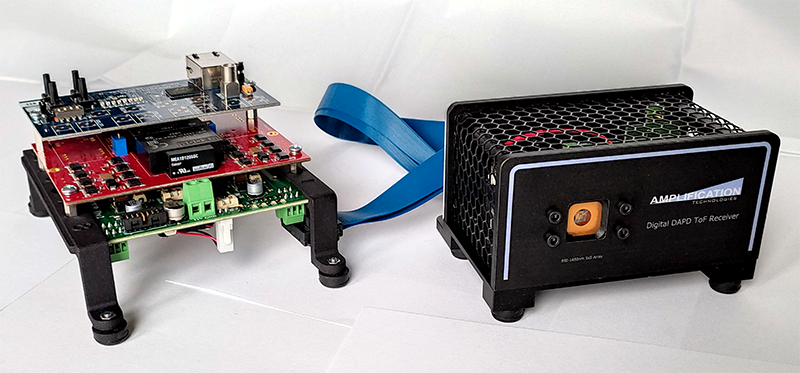Welcome to Amplification Technologies
Discrete Amplification Photon Detector (DAPD)
Discrete Amplification Photon Detector (DAPD) Optimized for 3D LiDAR Applications
-
Single and multi photon detection ability: linear response to number of photons
-
Fast recovery time; no ‘dead time’
-
Simpler electronic, RF signal extraction and subsequent DSP processing
Key Features
Wavelength Range
Photon detectors available using InGaAs/InP absorbing layer for responsivity in a wide spectral range between 950nm to 1650nm
Sensitivity Level
Single photon level sensitivity with high (single) Photon Detection efficiency (PDE) of up to 25%
Stability
Excellent voltage and thermal stability
Linearity (proportionality)
Output signal is proportional to the amount of photons per pulse
Dynamic Range Wide dynamic range
>25dB for the 200µm DAPD
Fast response
Fast response (rise time <0.4ns), which is a function of a micro-cell, not the active area (photo-detection aperture) size
Recovery Time
Extremely fast recovery of a single micro-cell: with half time for recovery of ~50ns to 100ns
Other Applications
-
Laser Range Finding (LRF)
-
Night vision
-
Cameras and imaging systems
-
Security systems


